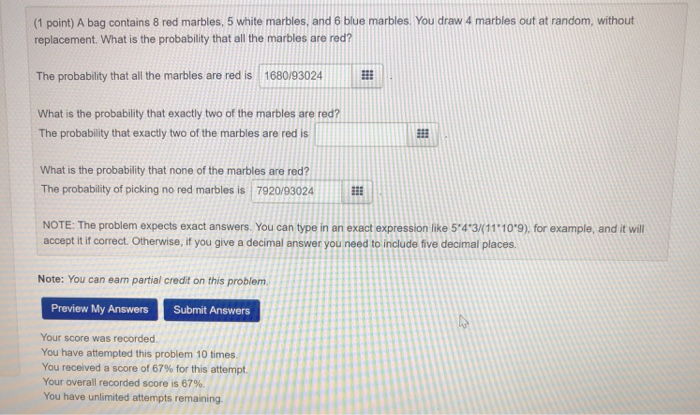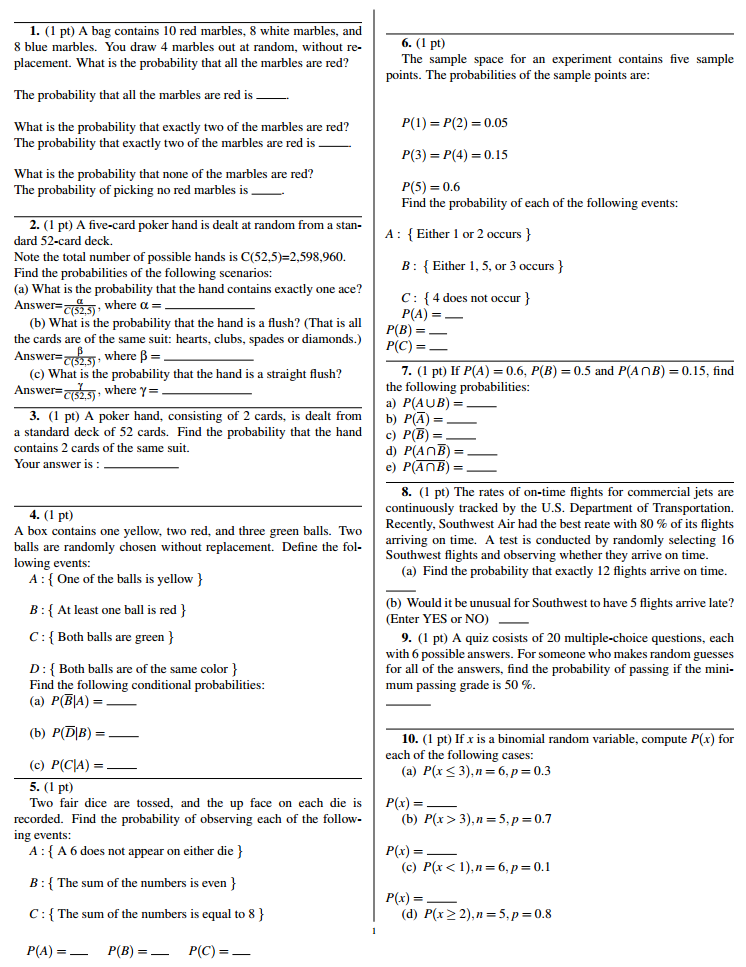B a white marble is drawn first followed by a white marble.
A bag contains 3 red marbles and 4 blue marbles two marbles are drawn at random without replacement.
A bag contains 3 red marbles 5 green marbles and 2 blue marbles.
A bag contains 5 red and 3 blue marbles.
A bag contains 8 red marbles 6 blue marbles and 3 green marbles.
Two consecutive draws are made from the bag without replacement of the first draw.
What is the probability of selecting a blue marble on the second draw given that the first marble drawn was red.
Theres a total of 12 marbles of which 3 of them are yellow so the odds of picking a yellow is 3 12 or 1 4.
P at least one red p rr or rb or br alternatively p at least one red 1 p no reds complementary events 1 p bb and so on.
Two marbles are drawn randomly one after the other without replacement from a jar that contains 3 red marbles 6 white marbles and 7 yellow marbles.
If three marbles are drawn out of the bag what is the probability to the nearest 1000th that all three marbles drawn will be blue.
B find probabilities for p bb p br p rb p ww p at least one red p exactly one red 3.
Another marble is taken from the bag.
Two marbles are drawn without replacement from a jar containing 4 black and 6 white marbles.
Two marbles are drawn at random without replacement.
The probability is.
Total number of marbles in the bag is 3 4 7.
Determine the probability that at least one is red.
A a red marble is drawn first followed by a white marble.
Two marbles are drawn without replacement.
Two marbles are drawn without replacement.
The probability of drawing 3 red marbles in a row from a bag of 3 blue and 4 red marbles without replacement is right at about 0 11 or about 11 in 100 if you want odds remember that probability.
The problem asks for the probability of rr or bb.
Work out the probability that the two marbles taken from the bag are the same color.
A draw the tree diagram for the experiment.
The probability of selecting a red marble on the first draw is 0 5.
If you take that out you know have 11 marbles of which 2 of them are yellow so the odds of picking a yellow marble is 2 11 the odds of picking a yellow marble twice in a row is found like this 1 4 2 11 2 44 1 22 ans.
A marble is taken at random and replaced.
A bag contains 3 red marbles and 4 blue marbles.
Two marbles are drawn simultaneously from the bag.
Find the probability of the following events.
A bag contains red and blue marbles.
Drawing simultaneously is the same as sampling without.
A jar contains 4 black marbles and 3 red marbles.
If the first marble drawn is red what is the probability the second marble is blue.























